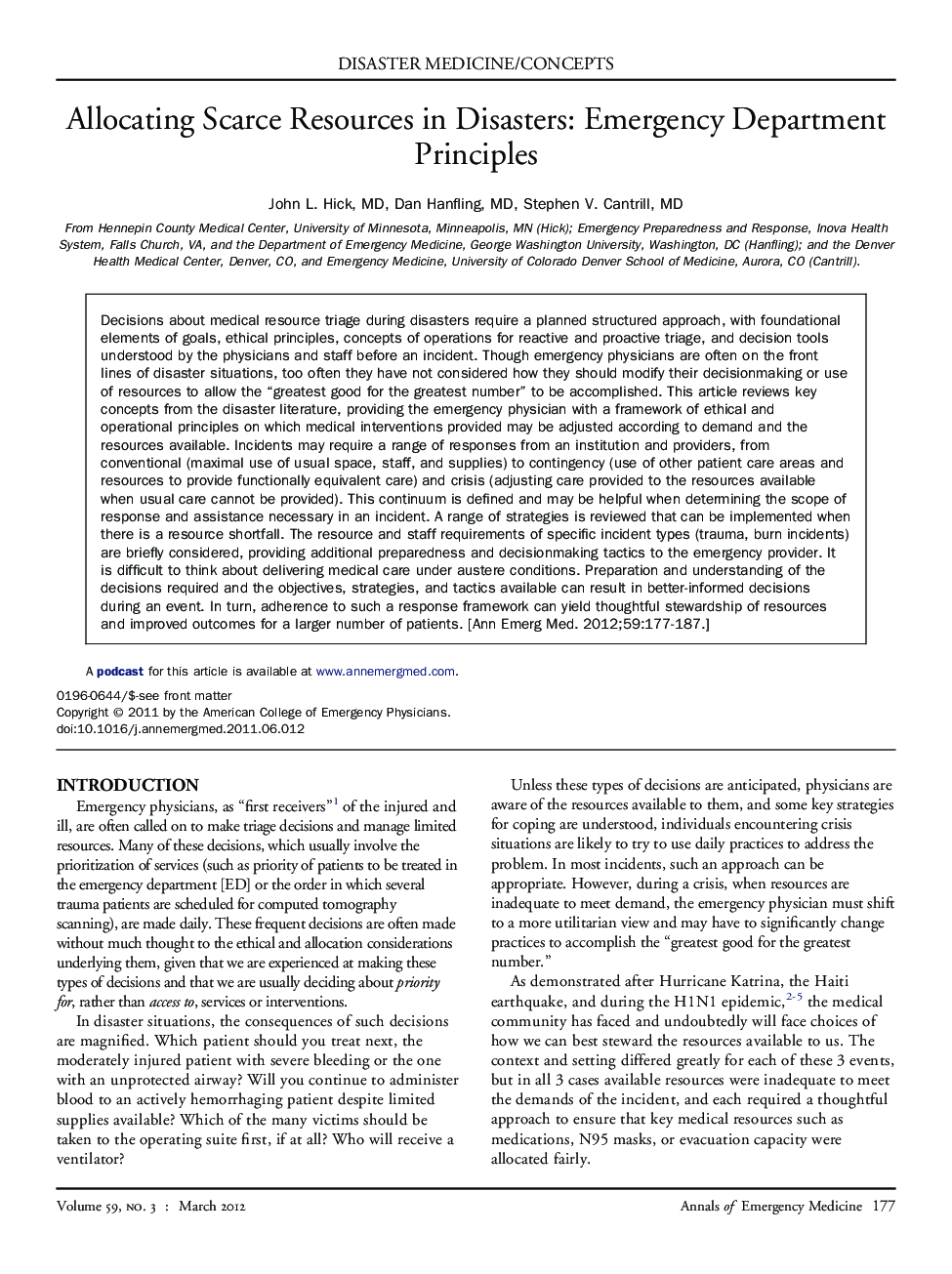| کد مقاله | کد نشریه | سال انتشار | مقاله انگلیسی | نسخه تمام متن |
|---|---|---|---|---|
| 3230540 | 1588561 | 2012 | 11 صفحه PDF | دانلود رایگان |

Decisions about medical resource triage during disasters require a planned structured approach, with foundational elements of goals, ethical principles, concepts of operations for reactive and proactive triage, and decision tools understood by the physicians and staff before an incident. Though emergency physicians are often on the front lines of disaster situations, too often they have not considered how they should modify their decisionmaking or use of resources to allow the “greatest good for the greatest number” to be accomplished. This article reviews key concepts from the disaster literature, providing the emergency physician with a framework of ethical and operational principles on which medical interventions provided may be adjusted according to demand and the resources available. Incidents may require a range of responses from an institution and providers, from conventional (maximal use of usual space, staff, and supplies) to contingency (use of other patient care areas and resources to provide functionally equivalent care) and crisis (adjusting care provided to the resources available when usual care cannot be provided). This continuum is defined and may be helpful when determining the scope of response and assistance necessary in an incident. A range of strategies is reviewed that can be implemented when there is a resource shortfall. The resource and staff requirements of specific incident types (trauma, burn incidents) are briefly considered, providing additional preparedness and decisionmaking tactics to the emergency provider. It is difficult to think about delivering medical care under austere conditions. Preparation and understanding of the decisions required and the objectives, strategies, and tactics available can result in better-informed decisions during an event. In turn, adherence to such a response framework can yield thoughtful stewardship of resources and improved outcomes for a larger number of patients.
Journal: Annals of Emergency Medicine - Volume 59, Issue 3, March 2012, Pages 177–187